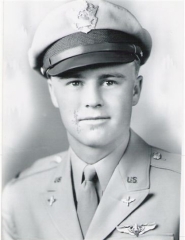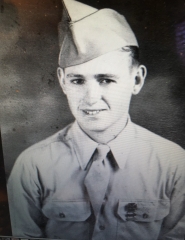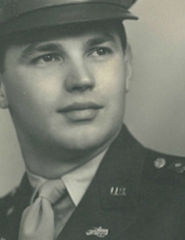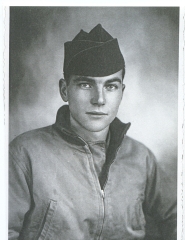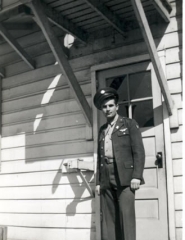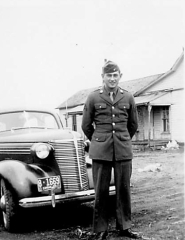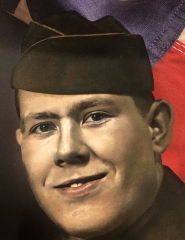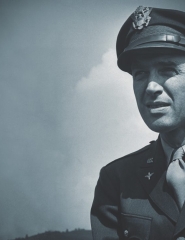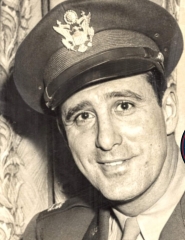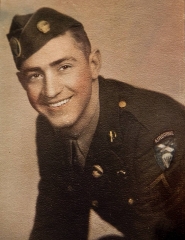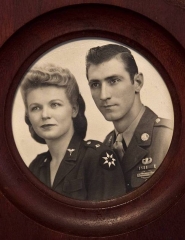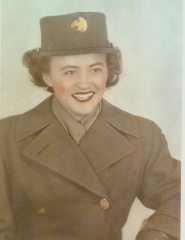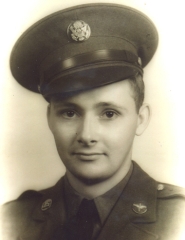1st Platoon - H Co. - 501st Parachute Infantry Regt. - 101st A/B Division
Our Drop Zone was 'DZ C'. Our objective was to provide security for Division HQ's (101st Abn Div), and to be held in ready reserve for any situation that might arise. Our flight path was probably parallel in straight line from Le Port to Hiesville, and very likely we were dropped too soon. And far enough south of that line so as to arrive at the south bank of the Douve River and we arrived near daybreak in the area of Le Port, which is located on the Ste. Mere Eglise map.
The Douve appears to be flowing southeast in that area and then veers off to a more southern direction at the bottom of the map. This accounts for the 16th man in our jump-stick ending up on the other side of the river!
The Germans in that area seemed to have been on the alert, because our scout, 'Lavern French', was captured. Then we received machine-gun fire while we were crossing a road upshot of which our squad was divided.
As the sun was just beginning to bring light that morning we saw a German patrol walking beyond a short hedgerow. In retrospect, the patrol was walking along the dike of the river and had a hedgerow running parallel to it. We walked along that hedgerow until we found a gap/break. I, McMullen, and Paraseau had just emerged on the other side when another German patrol came walking along the dike. We froze and hoped we wouldn't be seen in the faint light of dawn, but that wasn't to be! Now we had been instructed to protect ourselves, but you must remember, we were trained to fight as a unit, so don't start any 'little wars', get to your assembly area at all costs!
Well, the moment we were spotted, McMullen opened up with his sub-machine gun. I looked up and saw the patrol hitting the ground and threw a grenade. I guess Mac felt we had them neutralized, because he said, 'lets get out of here'. Since Mac and Paraseau were closest to the gap, we had came thru, I waited a couple seconds and threw another grenade. I waited for it to go off, then I headed for the gap, only to find Mac struggling to get thru the hedge with his sub-machine gun. Well, I gave him one mighty shove and that's when everything happened, all at once. Mac fell forward and his feet were above my face and the German behind us on the dike opened up with his burp gun. I felt my carbine being wrenched from my hands, and a burning, stinging on the right-side of my face (cheek). At that point, I fell all over Mac and panicked! I got up on the run, feeling my bloodied cheek with my right hand. I ran faster then my feet, stumbling all over myself. I knew I must have a hole in my head, so I tore off my helmet and kept feeling for the hole I just knew must be in my head.
A couple hundred yards down that same hedgerow, I slowed down enough for Paraseau to catch up with me. He said, 'you'd better bandage that wound'. And I could see him looking at my right hand in the dim morning light. It was at this time I saw a gash running along the inside of my right wrist, with blood still spurting out. I then realized the bullet that stung me in the right cheek must have also gashed the blood vessel in my right wrist.
Relieved that it wasn't my head, but just my right wrist that was damaged, I said, 'yes, I guess your right'. So I reached around with my left hand to retrieve my First Aid Kit off my Cartridge Belt. But I knew something was wrong? I was not having any luck getting hold of it? So I brought my left hand around to look at it and was startled to staring at the rounded bone of the first joint of my thumb! The fore-finger was dangling down on one side of my hand and the middle finger down the other side! I guess it was dumb of me, but I remember trying to put them back to where they belonged, only to find the bones in my hand that they had been connected to had partially been blown away!
Well, I took my shot of morphine out of my First Aid Kit and we went to work bandaging my hands, only to be interrupted by 12 or so Germans. They stripped us of everything we had except for our dog tags and uniforms. They made us put our hands on our heads and marched us off to a CP, or Medical Station a mile or so away. They had a couple of their own guys there with shrapnel wounds so we had quite a party wrapping wounds. I must have passed out on them, and when I came to, they had one of our medics try giving me blood plasma, but they couldn't get it in my veins, and they finally gave up on me.
Later, they brought in Mike Kinzer, who had been separated from our group when they had fired on us crossing the road earlier in the morning. That afternoon they loaded Kinzer, Paraseau and the medic and me on an open truck and took us back to the rear, (or at least I thought it was the rear)? They dropped the medic and me off at a Field Hospital and took Kinzer and Paraseau on to Germany as POW's where they spent the rest of the war. Although I was pretty well out of it, I got the impression the field hospital had been established in a school house or seminary. (If I remember right, it was at least two stories high and was adjacent to a church). They took the medic and me to a room on the second floor which had a wounded British Soldier in it (RAF if I recall). The next morning (7 June) they sent the medic on to the rear.
The next day, Thursday, the 8th, with an additional 2 or 3 POW's in the room, an artillery shell exploded just outside our room. It blew a hole in the wall and sent a piece of shrapnel into the room. Later that day they tried to take me down-stairs to examine my wounds. But I passed out on them. As I remember, from the wound's I received on D-Day. I kept drifting in and out of consciousness.
On Friday, 9 June, they took me down-stairs. My hand was swollen about the size of my head and the bandages that had been on since D-Day were all crusted to where they had to use scissors to cut them off. They pointed to the streaks running up my arm and suggested the hand be amputated. I vigorously shook my head 'no'. So they shrugged their shoulders and wrapped my hand back up.
Saturday the 10th they brought us all down-stairs to a courtyard where we now totaled 21 POW's all-together. The Germans were evacuating the facility, loading their own wounded on trucks.
Of our 21 wounded POW's, a few were 101st and 82nd troopers, but most were off Omaha Beach and some Brits or maybe Canadians off their beaches? They provided us with a horse drawn carriage or wagon with straw mattresses on it. But no horse, so some of us were pushing and pulling it with those who couldn't walk were riding. They also provided us with 6 guards. Three were teenagers and three were older, maybe 40 or 50 years of age. The guards were not Germans. I believe they were eastern Europeans. 5 of them were riding bicycles.
We didn't get started until afternoon. So we didn't get far before we stopped for the night and stayed in a barn for the rest of the night.
On Sunday 11 June, we came to a fork in the road. The guards didn't know which way to go, so 1/2 of them went one way, and the other 1/2 the other way. They abandoned us! Some French people took us to a slate mine, in the neighborhood we spent Sunday night.
The next day, Monday 12 June, elements of the U.S. 1st Infantry Division (The Big Red 1) came into the area and took us back to Omaha Beach where we were loaded on an LST. We landed back in England the morning of 13 June.
In England they put a cast on my left arm and hand. I never got back to the 101st Airborne area. I ended up in a hospital at an airfield in Scotland where I ran into McMullen on crutches. He had received a wound in his knee from the blast of the burp gun that got me. Remember I saw his feet above my head when I shoved him thru the gap in the hedgerow? He, Houston, and the medic evidently took off in a different direction from Paraseau and me. They hid in a low-lying area until mid morning on D-Day then waded the river where they joined up with Col. Johnson and the others in their D-Day mission, at the bridges on that day. Sgt. Houston suffered a shrapnel wound to his foot before the Normandy campaign was over. But he went on through all the operations the 101st was involved in and as a matter of fact, was awarded a battlefield commission before the end of the war.
From the Scotland Hospital and Airfield, I was put aboard a C-54 Hospital Ship as an ambulatory patient and landed in New York on July 3, 1944 at about 3 AM in the morning. My D-Day jump was my 13th and final jump. Outside a couple flights, I've hardly been in an airplane since. I married an Army Nurse before being discharged. We have 3 sons, 11 grandchildren and 5 great-grandchildren. I spent 38 years at Beech Aircraft as a Production Planner and retired in 1989.
I'm afraid my time in the service didn't amount to much, but I wouldn't have missed it for anything!
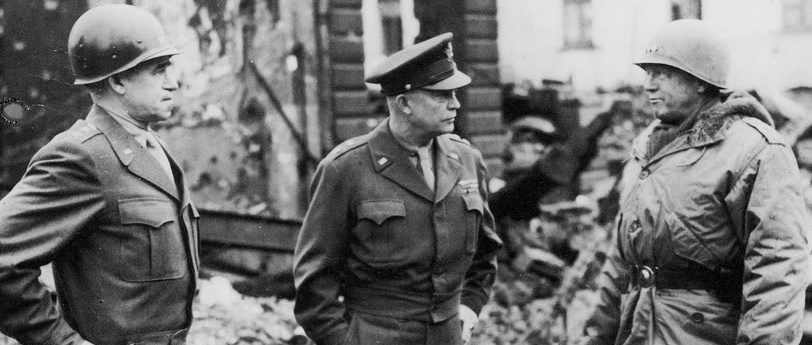
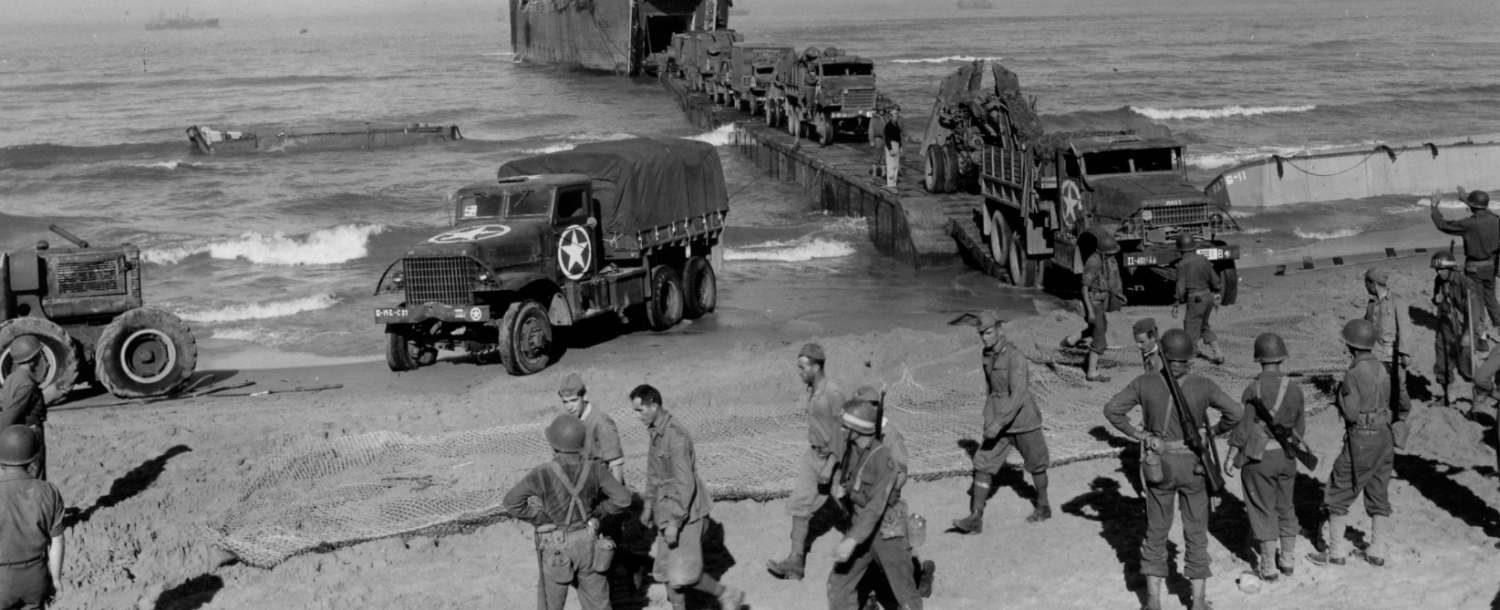
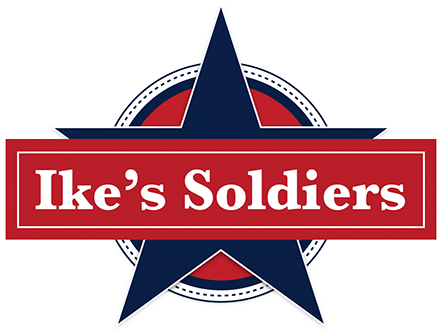
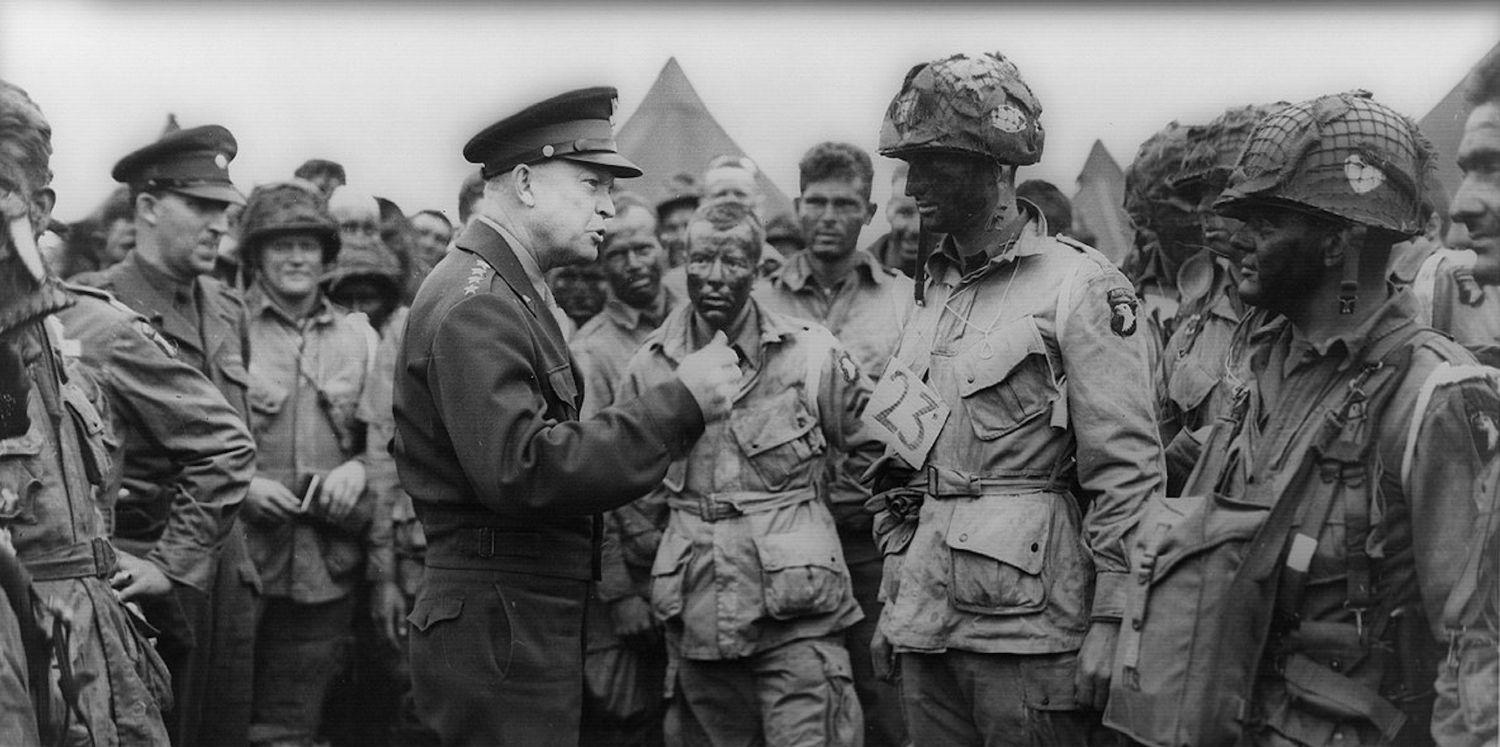

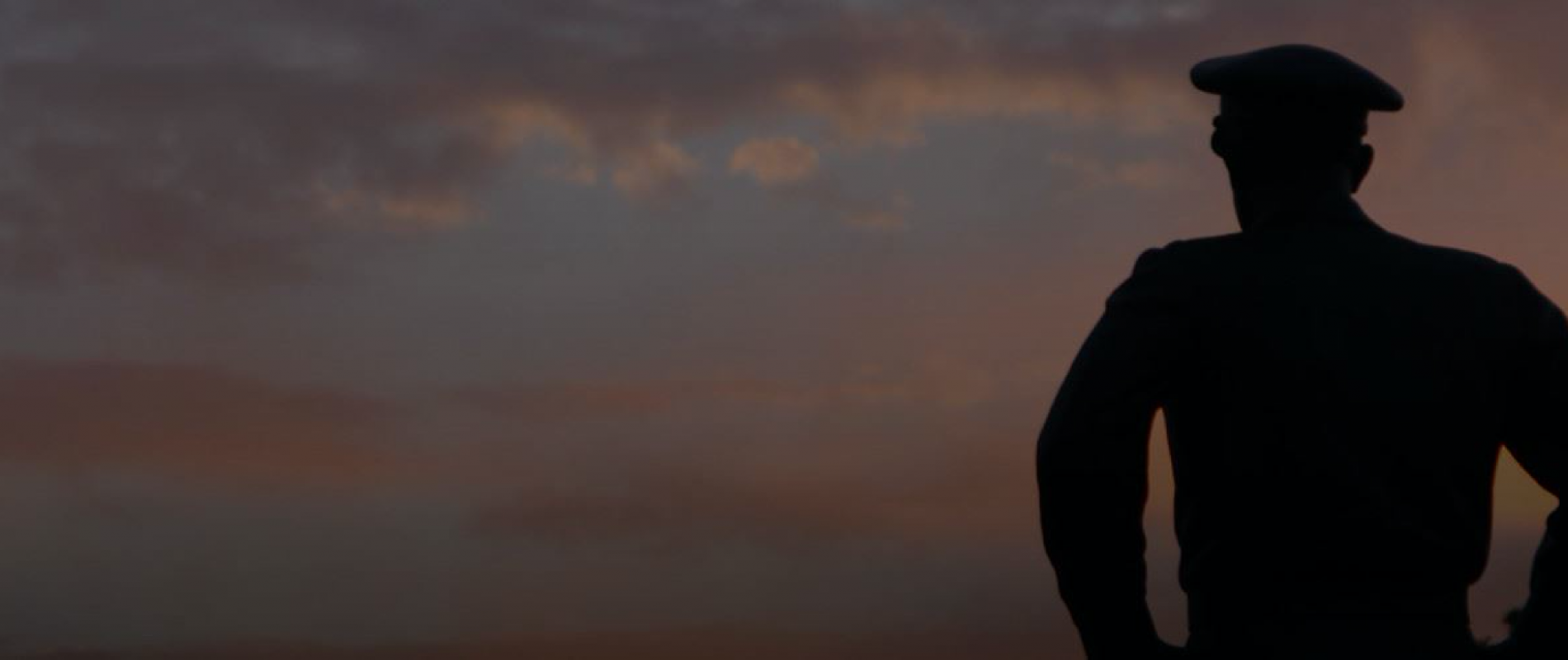

 Eisenhower Foundation
Eisenhower Foundation
